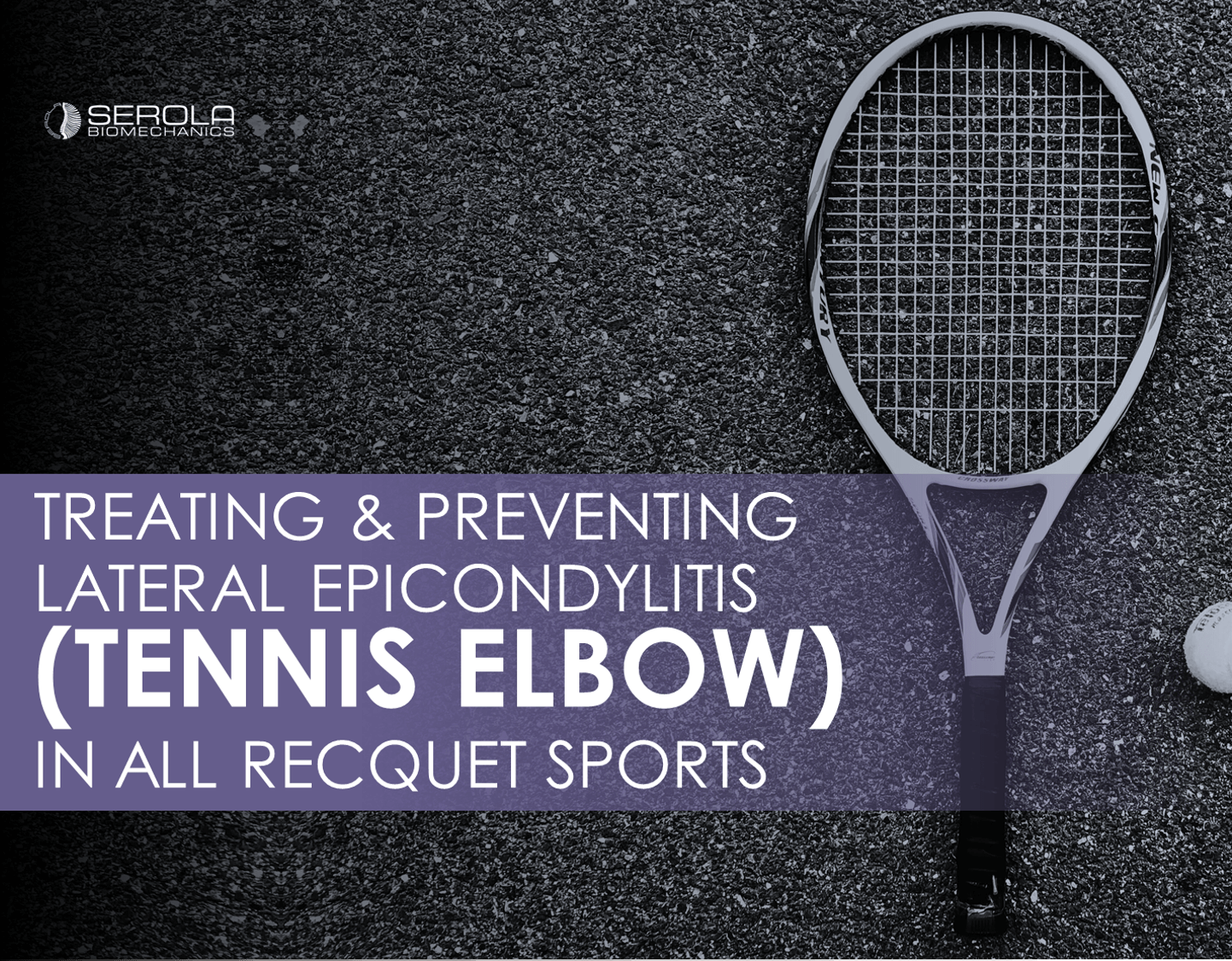Treating and Preventing Lateral Epicondylitis (Tennis Elbow) in All Racquet Sports

With the increasing tendency for young athletes to specialize in one or two sports to achieve higher performance comes the increased likelihood of overuse injuries. On the other end of the spectrum is the weekend athlete who plays competitive sports without sufficient strengthening or warming up, and suffers muscle and joint injuries.
Most Common Injury to Upper Limb
According to the National Institute of Health, lateral epicondylitis, (tennis elbow) is the second most common injury of the upper limb. Almost half of all tennis players develop lateral epicondylitis (tennis elbow) during their lifetime[1]. Although it is primarily related to tennis, any player of a racquet sport that employs a backhand stroke may develop lateral epicondylitis, e.g., pickle ball, squash, racquetball, etc.
Tennis elbow occurs from overuse of wrist extensors and forearm supinators during a backhanded stroke.  The shock and vibration that occurs when hitting a ball with a racquet travels up the wrist extensors on the back of the forearm and causes microtrauma at the origin of the muscles where they insert into the lateral epicondyle. Normally, microtrauma is a method the body uses to help strengthen muscles and tendons; as they heal, they thicken and strengthen. However, with repeated use, microtrauma, without sufficient time for healing, will eventually cause inflammation and pain. Recovery may be difficult and, without treatment, may take 1-2 years to heal.
The shock and vibration that occurs when hitting a ball with a racquet travels up the wrist extensors on the back of the forearm and causes microtrauma at the origin of the muscles where they insert into the lateral epicondyle. Normally, microtrauma is a method the body uses to help strengthen muscles and tendons; as they heal, they thicken and strengthen. However, with repeated use, microtrauma, without sufficient time for healing, will eventually cause inflammation and pain. Recovery may be difficult and, without treatment, may take 1-2 years to heal.
Tennis Elbow Healing Process
There are several factors that contribute to helping the healing process. First, we should look at the racquet, then treatment, and prevention. Here are some things to consider which reduce force on the arm, and therefore place less stress on the epicondyle.
Racquet
- Heavy Racquet: allows more power. In general, it is harder to swing but vibrates less, so less force goes to the arm. Be careful not to go too heavy – assess your comfort after a short time playing. Too heavy will reduce speed and power.
- Balance Point: where the weight of the racquet is split between the head and handle, which determines whether it is head-heavy or head light. Heavy racquet rules apply.
- Flexible Racquet Frame: less power, more control, and vibrates with greater amplitude but absorbs shock better for less force on the arm.
- Larger Head Size: In general, it gives more surface area to contact the ball for better rebound and more power, and is more forgiving.
- Rubber Handle: flexibility transfers less force to the arm.
- Lower String Tension: vibrates less, transfers less force to arm, less control, but more power, higher rebound angle, and less accuracy.
- Thinner Strings: spreads impact of ball over more area to reduce force to arm.
- Handle Grip Size: too small requires more muscle strength to keep the racquet from twisting in your hand. Too large presents a biomechanical disadvantage that also requires more muscle strength.
- Racquet Length: 27” is standard, longer gives more power and control, with less force to the arm. But the racket becomes harder to swing and slower, with less maneuverability. 29” is maximum allowed in tournament play.
Treatment (in order of consideration)
- If Acute: Rest 24 – 72 hours
*If mild, ice: 20 minutes per hour (3x) - Reduce activity
- Stretch wrist extensors
- Deep Tissue Massage
- Manipulation of wrist, elbow, shoulder, and cervical spine
- Eccentric exercises
- Anti-inflammatory medication
- Injection of steroid or Platelet-rich plasma (PRP)
- Surgery: last resort – release and debridement of the muscle origins at the epicondyle
Prevention
- Double-handed backhand strokes can lower the force on the elbow because it spreads the load transfer between two arms.
- Serola Gel Arc Elbow Brace: a unique, patented support that absorbs shock and vibration specifically just before the muscles insert into their origin, significantly reducing both shock and vibration before they reach the epicondyle. To learn about the top three benefits of using the Serola Gel Arc Elbow Brace, click here.
As discussed, there are many factors that play into the development of tennis elbow. You don’t have to utilize each element but, when it comes to choosing between several racquets that may be available, you can use this list as a guide. The idea is to use the elements that will help you recover best by minimizing shock and vibration to your lateral epicondyle.
Reference: 1. Cutts, S., et al., Tennis elbow: A clinical review article. J Orthop, 2020. 17: p. 203-207.

